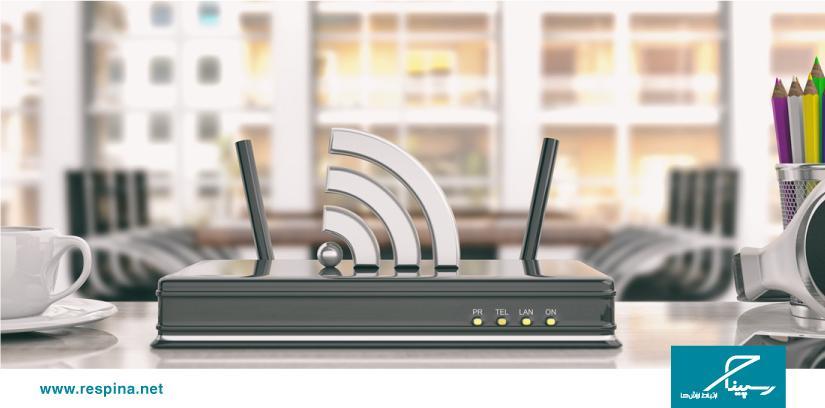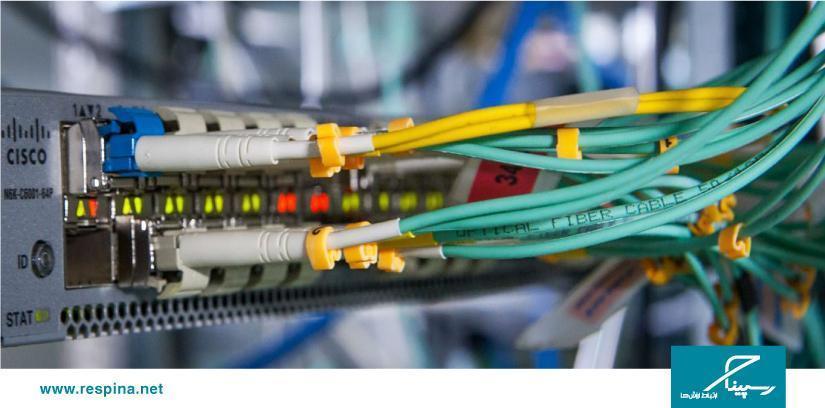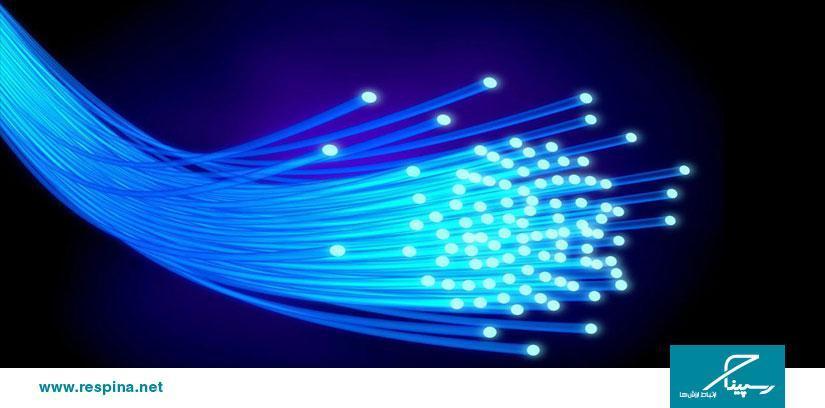سرویس پهنای باند، اینترنت، وایفای (Wi-Fi) و DSL چه تفاوتهایی دارند؟
استفاده از اینترنت و تکنولوژی روزبهروز در حال افزایش است و تعداد کاربرانی که از شبکه اینترنت بهره میبرند رو به افزایش است. انتخاب بهترین ارائهدهنده اینترنت وابسته به ویژگیهای متعددی است که بهطور مستقیم بر تجربه کاربری تاثیر میگذارد. یکی از مشکلات به هنگام انتخاب یک سرویس اینترنت، ندانستن مفهوم برخی اصطلاحات و ویژگیها است. در این مقاله قصد داریم تفاوت اصطلاحات سرویس پهنای باند، وایفای (Wi-Fi) و DSL را بررسی کنیم تا به شناخت بهتری در این مورد برسید.
امروزه بسیاری از مردم وایفای را هممعنی با دسترسی به اینترنت میدانند و سرویس پهنای باند را با اینترنت یکسان میدانند. واقعیت این است که هر کدام از این اصطلاحات مفهوم متفاوتی دارند و بهدلیل شباهت عملکرد به اشتباه یکسان تلقی میشوند. در ادامه به بررسی هر یک از این اصطلاحات میپردازیم.
اینترنت چیست؟
اینترنت یک شبکه ارتباطی است که به کامپیوترها امکان اتصال به یکدیگر را میدهد. دادهها با زبانی قابل درک برای کامپیوتر در این شبکه از یک دستگاه به دستگاه دیگر منتقل میشوند. اینترنت شبکه جهانی میلیاردها کامپیوتر و سایر دستگاه های الکترونیکی است. با اینترنت می توان تقریباً به هر اطلاعاتی دسترسی پیدا کرد، با هر فردی در هر نقطهای از جهان ارتباط برقرار کرد و کارهای بسیار دیگری انجام داد. وقتی شخصی میگوید کامپیوتر آنلاین است، فقط روش دیگری برای بیان این است که به اینترنت متصل است.
ISPها با دارا بودن کابلها یا ماهوارهها، مجرای مناسب جهت ارسال و دریافت اطلاعات بین کامپیوترها را فراهم میکنند. شما با استفاده از مودم به این مجراها متصل میشوید و روتر شما همان ابزاری است که امکان برقراری اتصال به اینترنت را چه با سیم و چه بیسیم برای شما فراهم میکند.
سرویس پهنای باند چیست؟
سرویس پهنای باند در حقیقت یک اصطلاح مهندسی الکترونیک است که به انتقال دادههای پهنای باند اشاره دارد، اما در عمل، اینترنت باند پهن معمولاً به سیگنال همیشه روشن و پرسرعت تحویل داده شده از طریق خطوط کابل، خطوط تلفن، فیبر نوری یا سیگنالهای رادیویی اشاره دارد.
اگر اینترنت دادههایی باشد که بین دستگاهها منتقل میشود، سرویس پهنای باند مسیری است که آن دادهها طی میکنند. انواع مختلفی از سرویس پهنای باند وجود دارد- کابل، DSL، فیبرنوری، بیسیم، بیسیم ثابت و پهنای باند ماهوارهای – که هر کدام مزایا و معایبی دارند.
رسپینا با ارائه پهنای باند اختصاصی این امکان را برای سازمانها فراهم آورده است تا از اینترنتی پرسرعت و پایدار در تمام ساعات شبانهروز بهرهمند شوند و با انتخاب سرویسی متناسب با نیازهای سازمانی خود، برخلاف پهنای باند اشتراکی، از تمام ظرفیت سرویس پهنای باند استفاده کنند.

DSL چیست؟
DSL، مخفف Digital Subscriber Link، نوعی اینترنت باند پهن است که از خط تلفن شما استفاده میکند. DSL را با اینترنت Dial-up که در گذشته استفاده میشد، اشتباه نگیرید. DSL تقریباً به همان سرعت اینترنت کابلی است و مانند همه انواع پهنای باند، همیشه روشن است و هیچ تداخلی با تلفن ثابت شما نخواهد داشت.
انتخاب DSL بهجای پهنای باند کابلی، به منطقهای که در آن هستید بستگی دارد. ممکن است در جایی که مستقر هستید، DSL قیمت پایینتری داشته باشد یا دارای ویژگیهای بهتری باشد. از طرف دیگر، راهاندازی و نصب DSL به خطوط تلفن ثابت نیاز دارد و در صورت نداشتن تلفن ثابت به پرداخت هزینههای اضافی برای راهاندازی خطوط تلفن نیاز دارید.
کابل، ماهواره و فناوری اینترنت بیسیم متفاوت عمل میکنند، اما هر کدام نوعی از پهنای باند هستند. کابل اینترنت برای ارائه اینترنت به مشتریان از زیرساختهای کابل تلویزیون با پهنای باند بالا استفاده میکند. ماهوارهها و پهنای باند بیسیم از سیگنالهای رادیویی برای انجام همان کارها استفاده میکنند و سرویس فیبر نوری که به عنوان FiOS شناخته می شود از خطوط فیبر نوری استفاده میکند.
آیا وایفای و اینترنت به یک معنی هستند؟
وقتی افراد درباره Wi-Fi صحبت میکنند ، معمولاً منظورشان یکی از این دو مورد است: دسترسی به اینترنت در خانه یا سازمان، یا ارائه اینترنت بیسیم. در هر دو مورد، Wi-Fi یک روش استفاده از امواج رادیویی برای ارسال و دریافت دادهها است.
Wi-Fi به افراد امکان دسترسی به اینترنت باند پهن و بدون اتصال فیزیکی به شبکه را میدهد. در گذشته تنها راه برای اتصال دستگاهها به شبکه، اتصال آنها به یکدیگر با استفاده از کابلها بود. اما امروزه روترها یا ترکیب مودم و روتر به دستگاههای شما این امکان را میدهد تا با استفاده از اتصال بیسیم با برد کوتاه، به دستگاههای دیگر در شبکه متصل شوند. یا به عبارت ساده تر، Wi-Fi روشی برای دسترسی به اینترنت است که ISP ها بدون نیاز به کابل به دستگاهها ارائه میدهند. Wi-Fi مستقل از اینترنت عمل میکند و ممکن است در مواقعی وایفای وصل باشد اما دسترسی به اینترنت و آنلاین شدن ممکن نباشد.
آیا پهنای باند موبایل و وایفای (Wi-Fi) یکسان هستند؟
شبکه Wi-Fi یک شبکه محلی است که بهصورت بیسیم دسترسی به اینترنت را برای کاربران فراهم میکند. از طرف دیگر پهنای باند موبایل به یک اینترنت قابلحمل گفته میشود که با سرویس اینترنت سلولار دسترسی به اینترنت را برای دستگاه شما فراهم میکند. اما به دلیل اینکه پوششدهی اینترنت موبایل در همه مناطق یکسان و پایدار نیست و با افت سرعت مواجه میشود، کسبوکارها و افراد از این نوع سرویس به عنوان سرویس اصلی استفاده نمیکنند.














دیدگاهتان را بنویسید
برای نوشتن دیدگاه باید وارد بشوید.